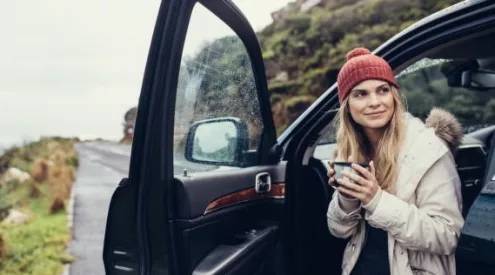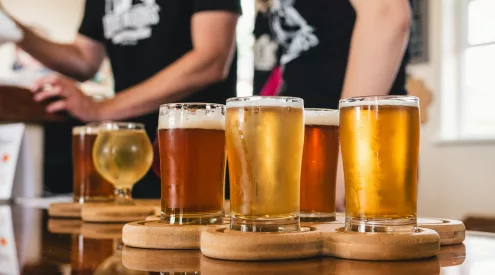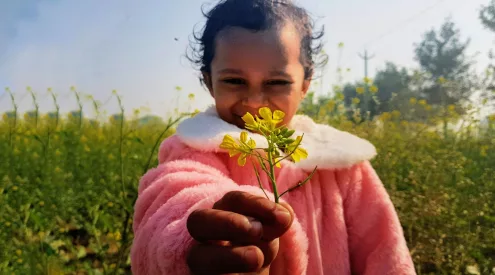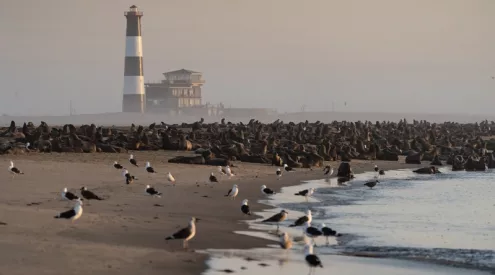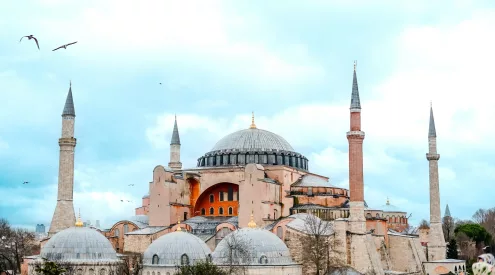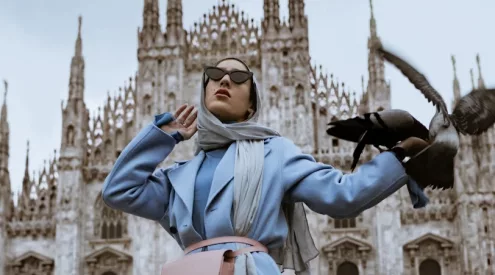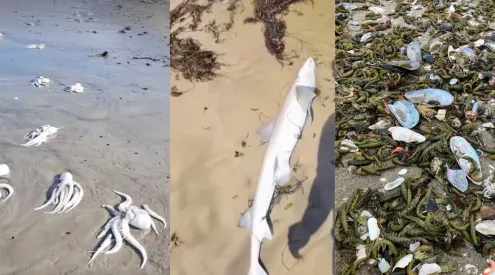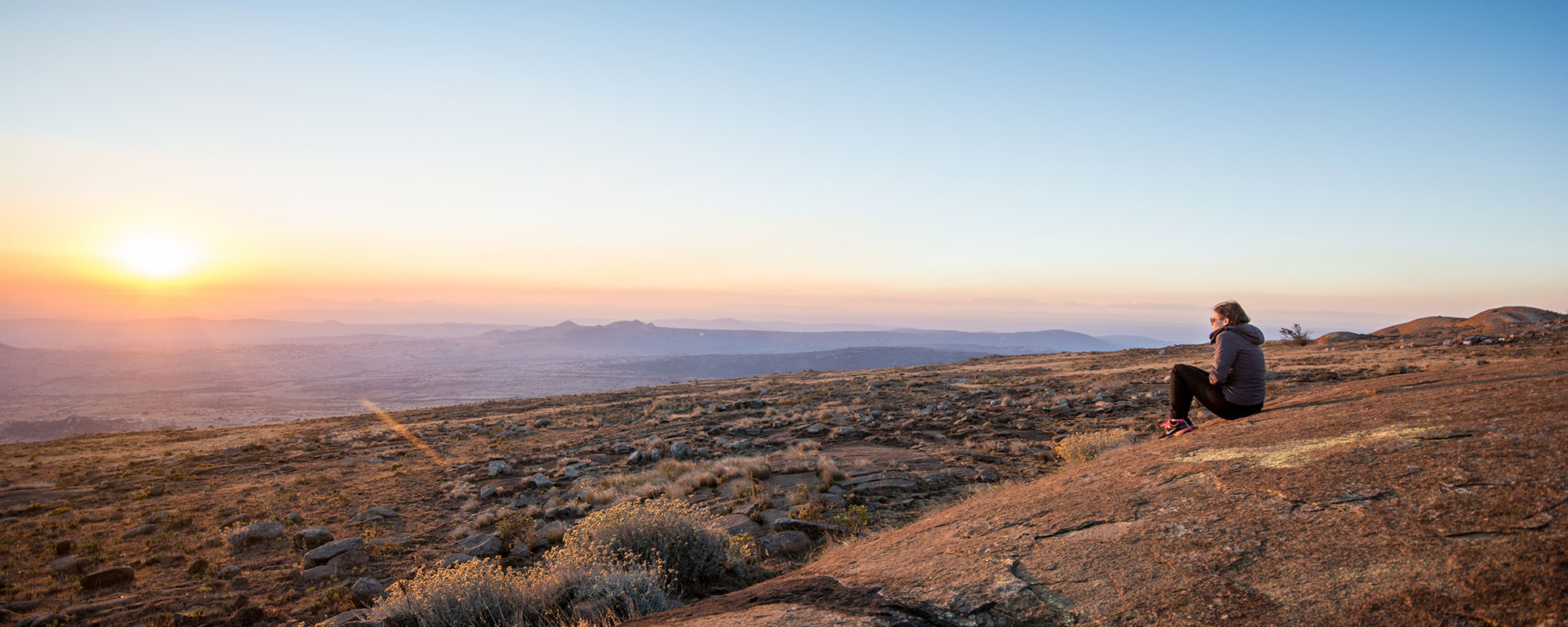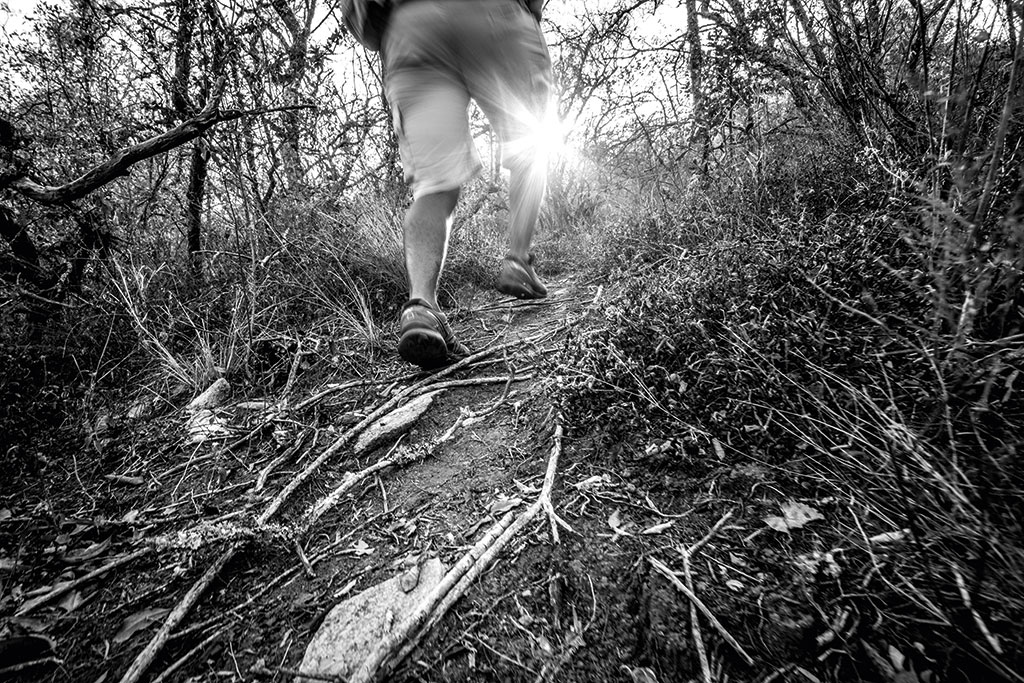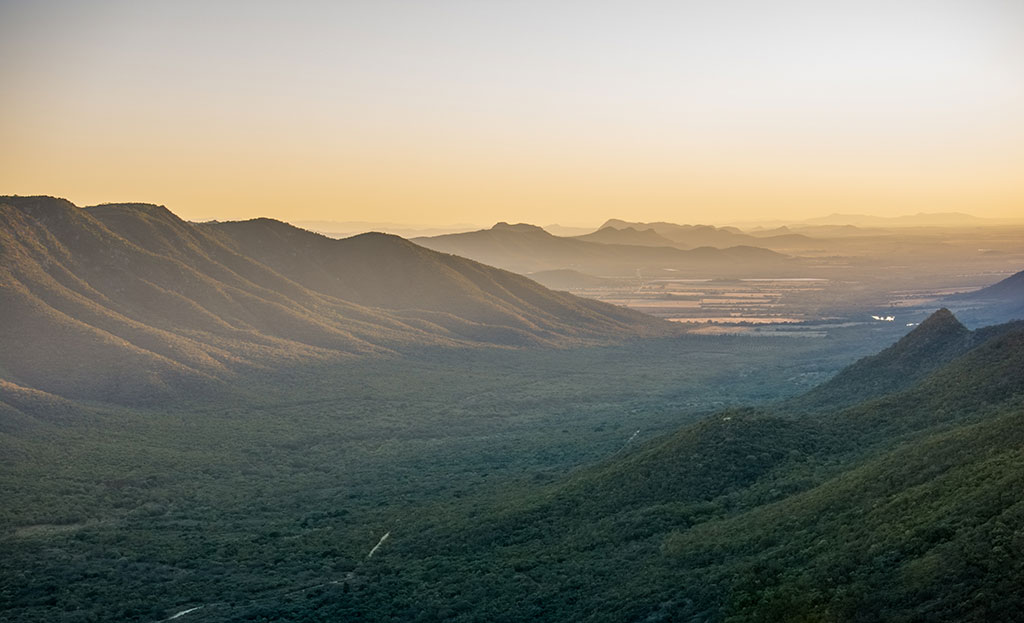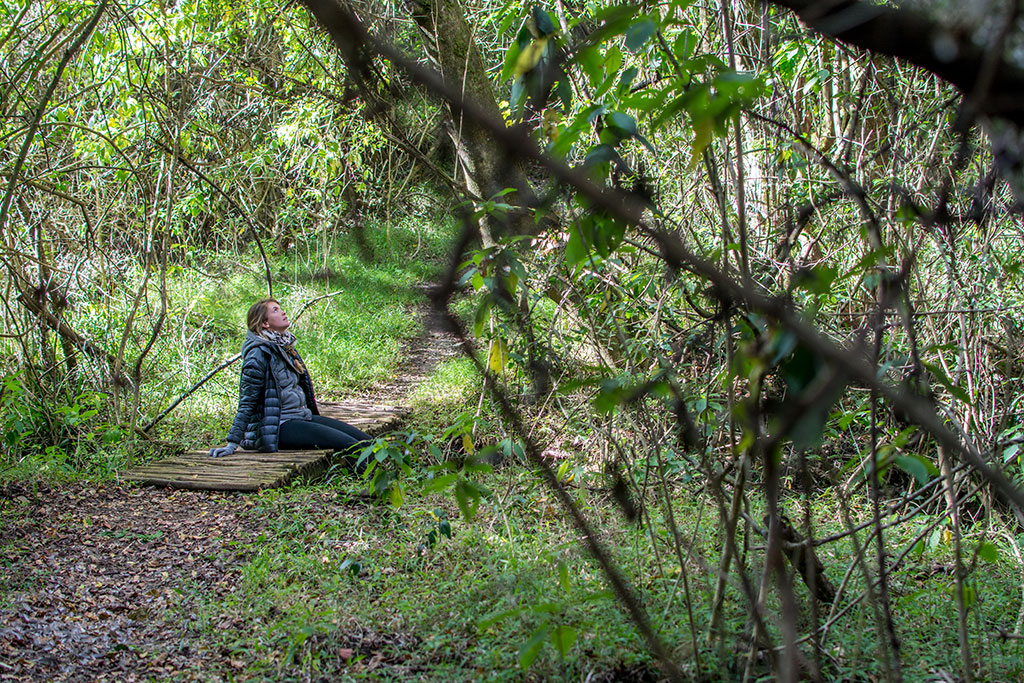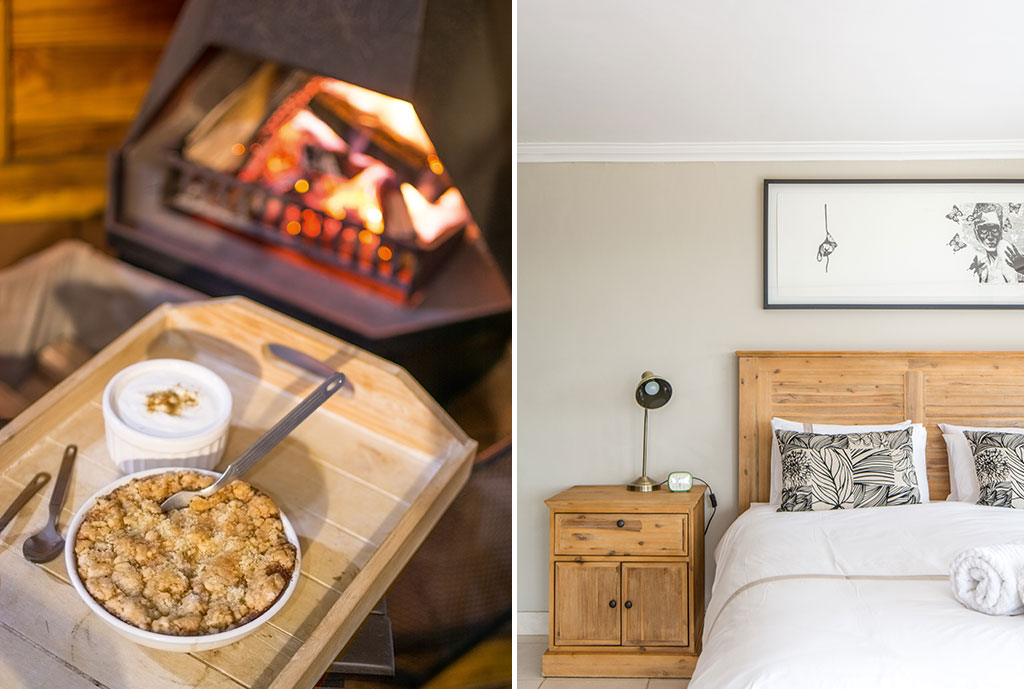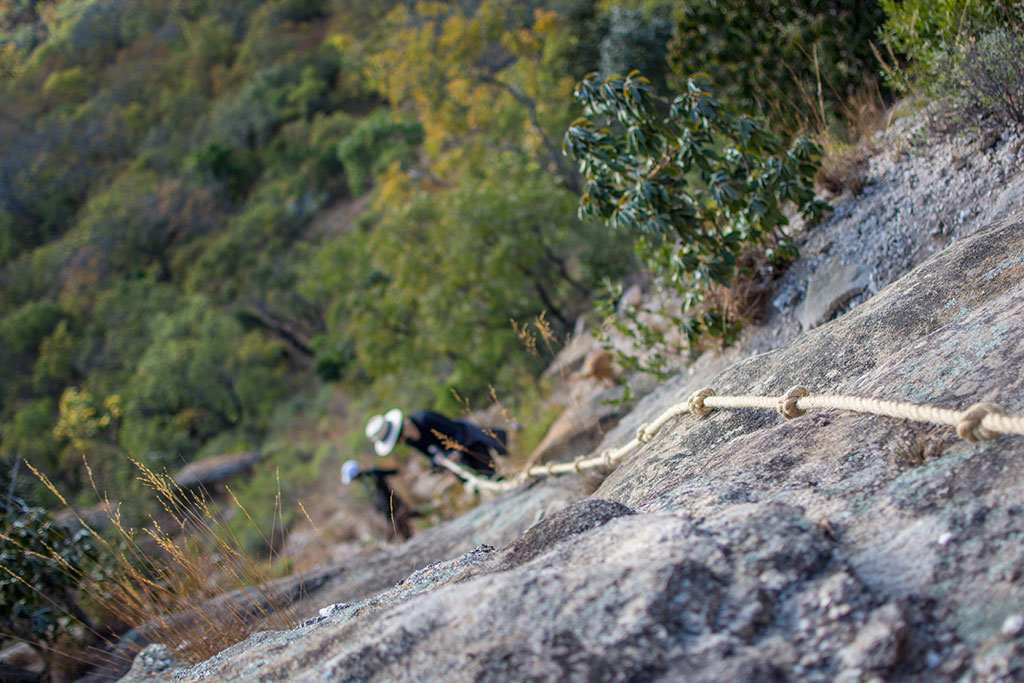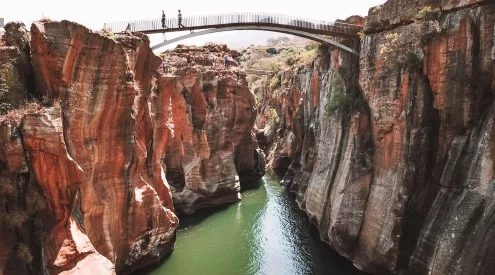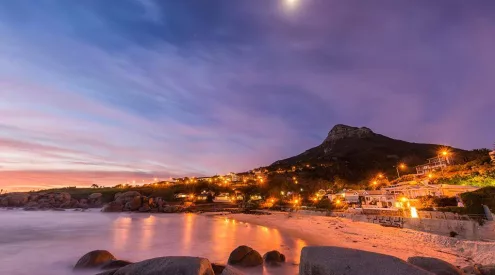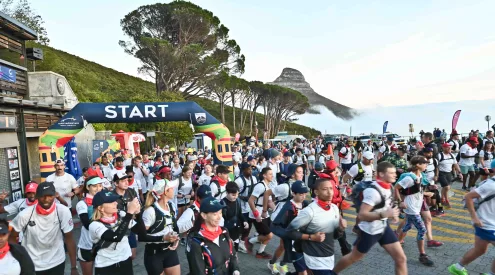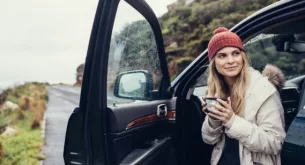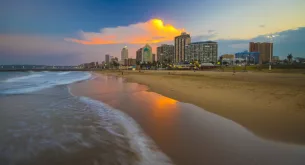Experienced bushwhacker and hiker, Melanie Van Zyl finally visits her fantasy cabin in Magoebaskloof on a pet-friendly two-day hike.
Heard of ‘cabin porn’? It refers to the ogling of gorgeous cabins in remote places – an urge for a simpler life in remote surroundings. For months, I had been lusting after one particular cabin in the Woodbush Forest near Magoebaskloof. Built on stilts three metres off the ground, it sits among rare samango monkeys and catches a chorus of woodland bird calls. And even though I hadn’t been there, I knew it intimately from pictures: an enamel kettle sits on a gas stove in the corner; a big Cadac gas bottle fitted with a lantern hangs from the wall, and a wooden ladder leads up to a platform with low beds.
Also read: slackpacking luxury on the Green Mountain Trail
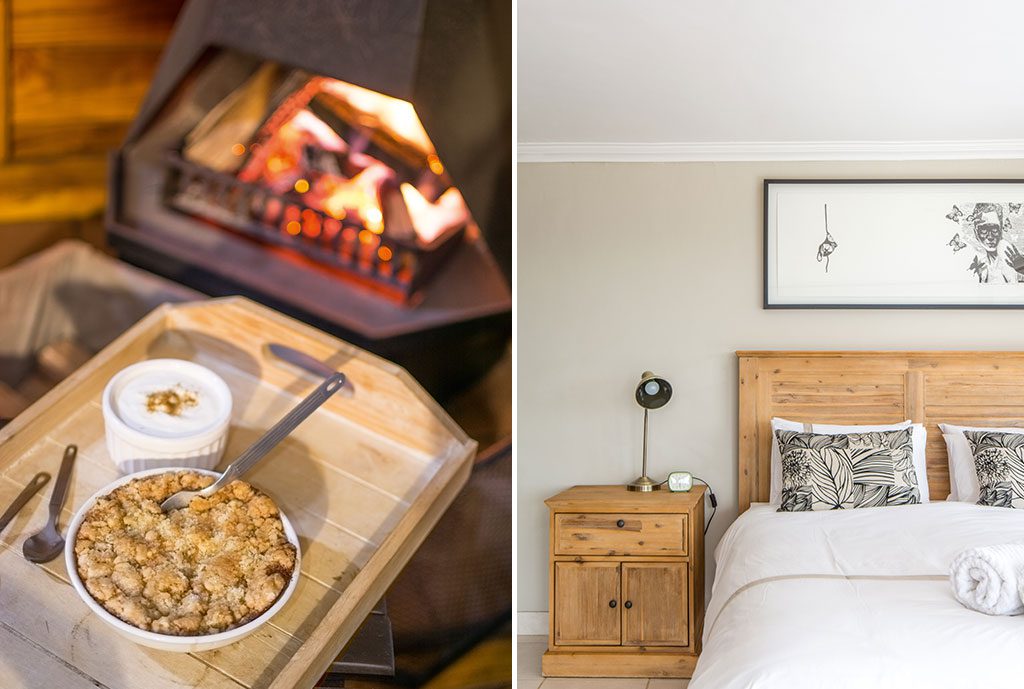
LEFT: Home-made apple pie beside the fireplace at Kurisa Moya. RIGHT: A good night’s rest is assured in the cosy cabin at Graceland.
On assignment to find great ecolodges in South Africa, I passed the entrance to this cabin on a dirt road heading towards a stylish new off-the-grid stay called Graceland Eco Retreat, just north of Polokwane. Then, over a few glasses of wine, Graceland co-owner Anders Ragnarsson told me about Limpopo’s newest slackpacking route – the Roots to Rivers Slackpacking Trail – and how it operates between Graceland and Kurisa Moya Nature Lodge … the home of my fantasy cabin. It was finally in reach. I signed up for the trail.
We set off at 7am from my cabin in the woods. It was everything I had dreamed of, and I woke with a smile on my face. Deep in the Woodbush Forest – South Africa’s second-biggest indigenous forest after Knysna – there was a chill in the air, which felt damp as I breathed in. The sun was up, but it was still moody below the forest canopy as the light took its time reaching down.
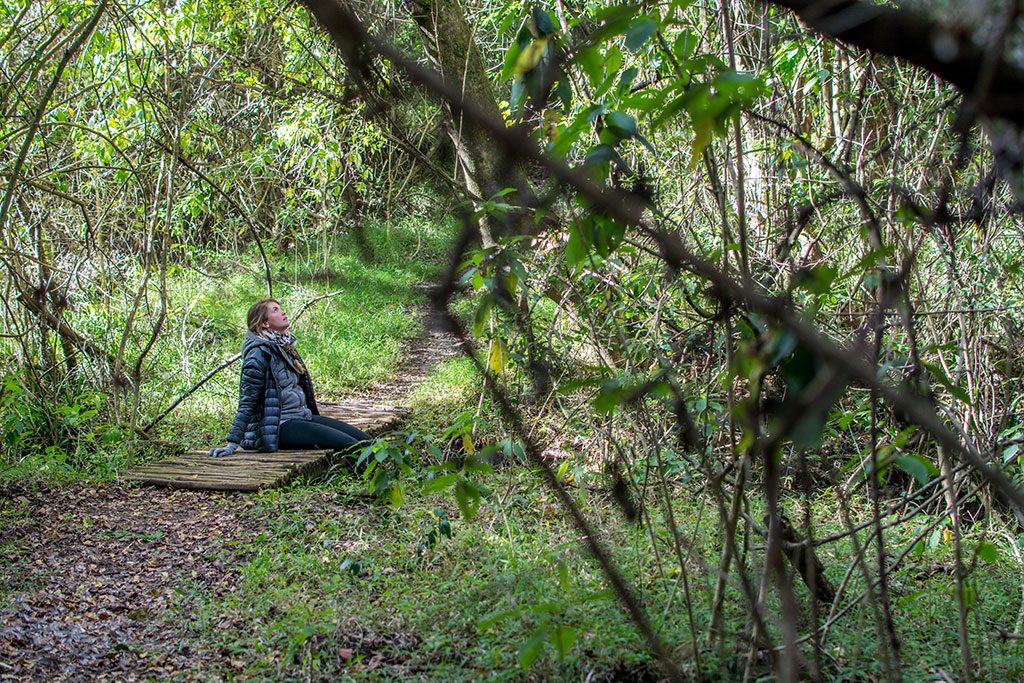
Taking in the abundant beauty of nature at the forest at Woodbush forest.
Kurisa Moya’s Paul Nkhumane, one of South Africa’s top BirdLife- accredited guides, provided a fascinating insight into the area, and to do this trail without him would be a mistake. Perfectly tuned to this heaving habitat, he pinpointed the birdcalls of bush shrikes, twinspots, robins and the (sprightly) sombre greenbul. The mulchy floor gives rise to stinkwoods, chestnuts and small girth yellow-woods because all the big ones were chopped down before laws were passed to protect them. We ducked under old man’s beard draped from branches and Paul pointed to big holes where saw pits used to function before we stopped beneath the largest known cabbage tree or kiepersol, estimated to be about 200000 years old.
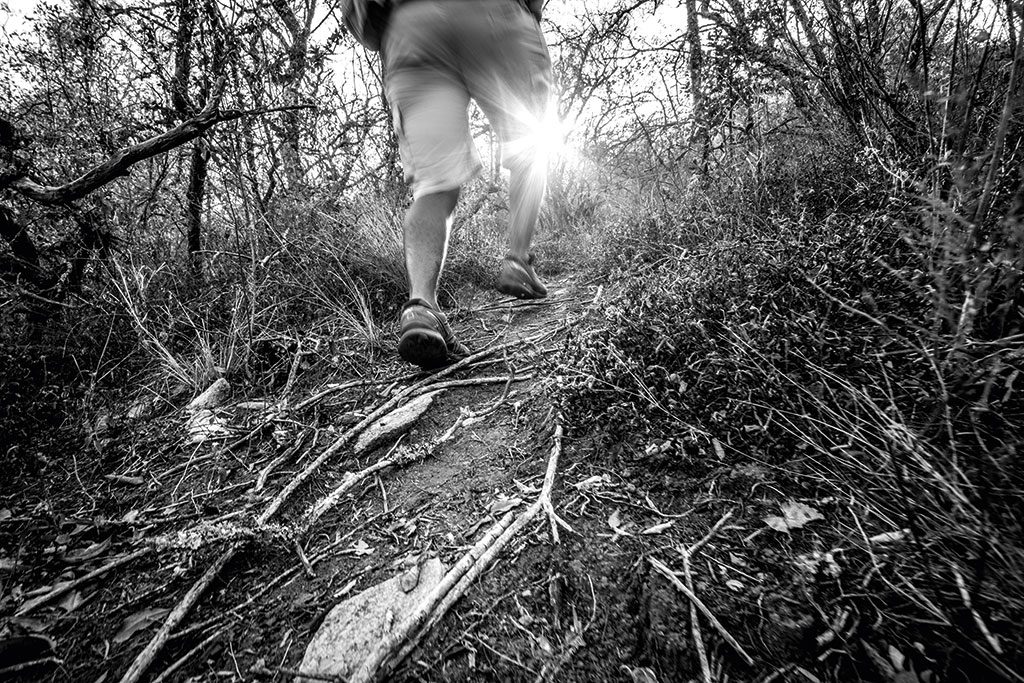
Clambering up koppies.
We then emerged from the emerald valley, suddenly stepping into the sunshine. The landscape morphed from soft to hard, and it was an easy climb up a rugged koppie into bushveld. I recognised stamvrug trees, which occur in the Waterberg too, except here they’re covered in old man’s beard – a pale-green reminder of the forest in the valley below. The throaty trumpets of the Knysna turaco were replaced by the varying calls of a scrub robin, and we caught the first glimpse of our destination in the sprawling Kudu’s River Valley below.
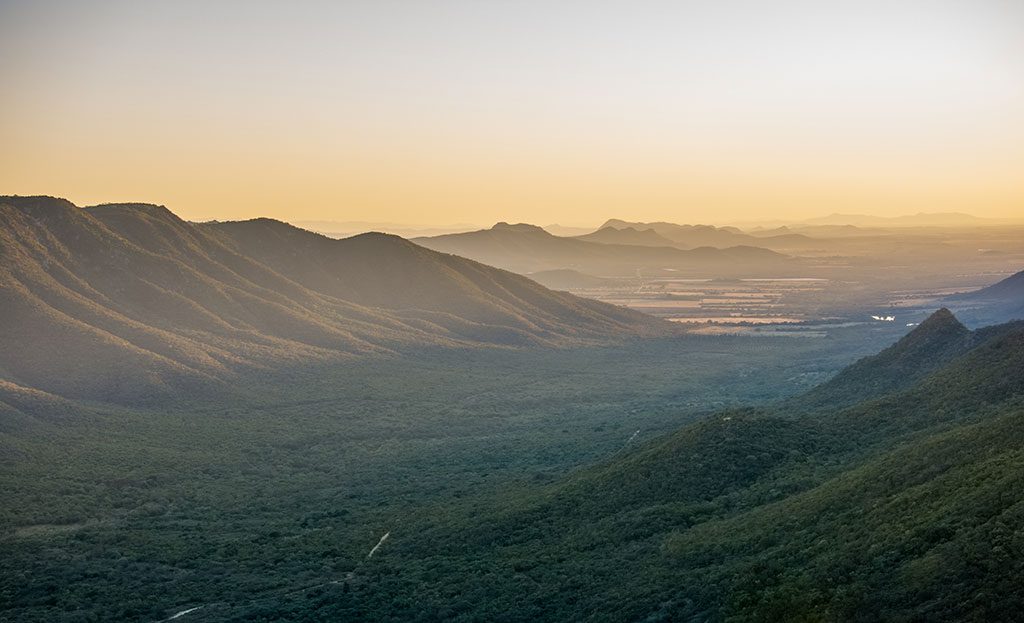
The endless views down the Kudu Rivers Valley.
We were welcomed to Graceland by three curious giraffes named Lisa Marie, Elvis and Priscilla. I can’t think of another place in the country where you could walk below a cool forest canopy in the morning and stumble across giraffe less than three kilometres away. I was bowled over by the variety of habitat and wildlife I saw in just one day on the trail, and followed the impala tracks to the lodge at Graceland where fresh lemonade and warm cheese scones were waiting. I found my longed-for simpler life in gorgeous surroundings, but I’m certainly not cured. Now the picture in my mind is accompanied by sounds and smells that drive the urge to return.
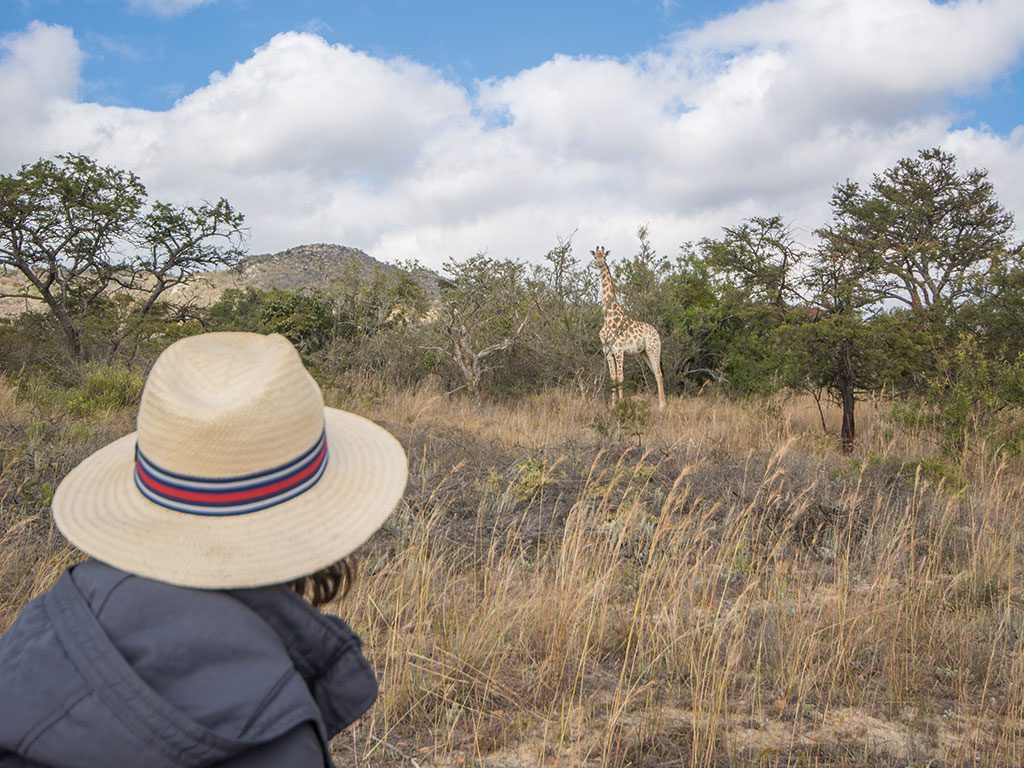
The giraffes at Graceland are super-relaxed.
Getting there
From Joburg on the N1, just before Polokwane take the Tzaneen off- ramp and follow the R71 for 20 kilometres. Just before the traffic lights, take the slipway to the left to the University of Limpopo. Stay on University Road for another 26 kilometres until it becomes dirt. Kurisa Moya Nature Lodge is on the right; a kilometre, further along, Graceland Eco Retreat is on the left.
How it works
The Roots to Rivers Slackpacking experience is a set of trails near Magoebaskloof, between Kurisa Moya Nature Lodge and Graceland Eco Retreat. The lodges differ slightly: Kurisa Moya is more rustic, with two forest cabins, a large farmhouse for groups and a mountain cottage. 0716586980, krm.co.za
Graceland is more chic and has a house linked to a cottage which sleeps six in total (no kids under 16). 0832775553, gracelandeco.co.za.
Both are off the grid and pet-friendly. For the full experience, I’d recommend booking three nights so you have two full days to explore and walk between the two. You can pack your own grub or ask to be catered for, as we did – meals at both properties were wholesome, generous and very tasty. Packed breakfasts and lunches are also done.
Need to know
Spring offers wildflowers, December is green (although there might be rain) and winter has mild daytime temperatures. The route is very flexible and can be tailored to your interests and fitness – we did roughly seven kilometres on the first day and 10 kilometres on the second, but it was easy going. Book a hiking guide, even if it’s just for a morning, to bring the area’s history alive and to find out about the fauna and flora. At the end of our stay, we also added on a cultural tour to a village outside Polokwane.
What to bring
Binoculars are vital for taking in the incredible birdlife. Wear a hat and carry water and snacks. Be sure to use good walking shoes – you’ll be scrambling up rocky koppies, walking gravel roads and trudging along damp forest floors.
Cost
We paid R1000 for a guide for a full day. There is a R300 luggage transport fee for two days per group. Graceland’s Kudu Cottage is from R750 per person self-catering or R1100 per person DBB. Kurisa Moya is from R800 – R1100 per person sharing self- catering; meals cost R180 to R280 per person.
This story first appeared in the November 2016 issue of Getaway magazine.
Our November issue features the next adventure frontier of Madagascar, affordable breaks in Hogsback, and what to do in the Cradle of Humankind.


